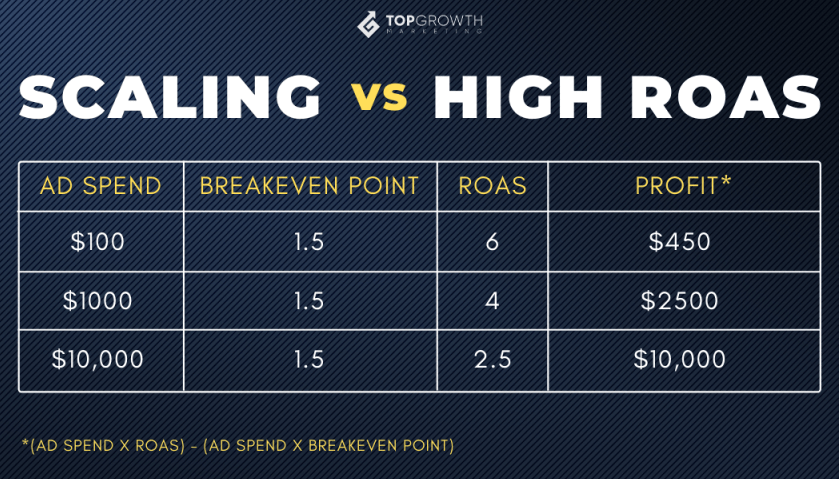Ad marketing can be creative and fun, but does it pay off? Do your online ad campaigns really bring you significant sales and profits?
There is so much competition out there on the web. So how do you know marketing through online ads is truly helping your business stand out? To gain a more comprehensive understanding, you should track the return your ads are generating.
Of course, then you will need to look at the data and make a calculation for how effective your ad dollars (euros?) are.
Which brings us to one particular KPI that is very important in online and mobile marketing, and which will be the subject of our today's article: ROAS (Return On Ad Spend).
Definition
ROAS, or Return On Ad Spend, indicates the amount of revenue your business gets from each dollar invested in an advertising campaign. Put simply, this indicator measures the actual efficiency of your ad marketing campaign.
Based on the return on investment (ROI) principle, it is however not the same as ROI. It specifically shows the profit achieved for each advertising expense and can be measured both on a high level and on a more granular basis. Whether you want to measure ROAS for an entire marketing strategy or look at performance at the campaign, targeting, or ad level, it’s a key metric for measuring and determining strategic success in online or mobile advertising.
According to statistics made recently in the U.S., each dollar invested in digital search advertising returned as $11.05 in profit, which shows that the digital domain is one of the most fertile grounds for advertising, compared to other channels such as radio or TV.
How is it calculated?
ROAS can be calculated using this simple formula:
ROAS(%) = (profit attributable to ads / cost of ads) x 100
Let's suppose you’re running an ad campaign that you invest $1000 into. At the end of the campaign, you are able to attribute $4000 in profit to those ads. Using the ROAS formula, you can determine an ROAS of 400%, which is a very good result.
Depending on how you calculate the cost of ads, but also on how easy it is to discern profit attributable to ads, this calculation can be simpler or more complex. In general, for the sake of simplicity and uniformity accross campaigns, the cost of ads is considered to be the cost of producing and running the ads. The additional handling costs, managing campaigns etc., are usually included within the larger scope of the campaign ROI.
How does ROAS compare to ROI?
ROI is a broader concept, and it refers to return on investment. To calculate it, you substract the initial cost of an investment from its ultimate value brought to the business, then divide this figure by your total cost. The final formula looks like this:
ROI(%) = (net profit / net investment) x 100
While the similarity of the ROAS and ROI calculations might support the idea that ROI and ROAS are comparable, they actually illuminate different aspects of your digital marketing strategy. Within online marketing, ROI and ROAS are both crucial metrics for marketers and advertisers to work with.
ROI is best used to get a general understanding of a campaign’s success and how it will impact your profits in the long term, and its calculation includes all investments made in that campaign as well as all its revenues. ROAS yields a more immediate, short-term view of how distinct ads or ad campaigns are performing.
For example you can have a positive, even a good ROAS metric for a marketing campaign, yet have a negative ROI overall for that campaign.
.png.aspx)
Is a bigger ROAS always better?
Counterintuitively, a higher ROAS isn’t always better. In certain situations, you might want to scale your ad campaign and incur a lower ROAS to increase the converted value or revenue from ads. The table below illustrates how a higher ad spend can lead to a lower ROAS but ultimately produce more revenue/profit for the business.

How is ROAS best used in online marketing?
ROAS analysis is most useful when you’ve scaled to the point that you’re tracking multiple campaigns, channels, and ad platforms, and need oversight over which are the most effective and should continue receiving budget allocation. As previously stated, ROAS can be applied at various levels and with varying degrees of granularity. So you might want to calculate ROAS on your overall ad spend, and then calculate by channel, campaign, and platform to determine your best performing channels, or where the highest level of profitability is likely to come from.
But as we've shown that ROAS doesn't tell the whole story (see picture above), you should also check where campaign scaling makes sense, so that even with a lower ROAS you can pull as much profit for the business as possible.
ROAS is best combined not only with ROI, but also with other important metrics and KPIs typical to online marketing. PPC metrics like cost per click (CPC), cost per acquisition (CPA), and cost per lead (CLP) can all be complemented by ROAS to help paint a complete and clear picture for advertisers when determining how to hit their online business targets.